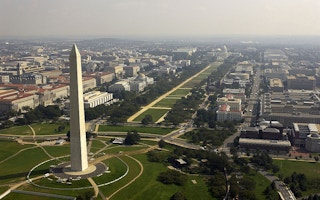On a work day, the U.S. capital does not appear much more “sustainable” than any other major city. Its streets are packed with cars, lights flicker in offices long after the occupants have gone home, and stark economic divides persist between neighbourhoods.
But beneath the surface, something is working in Washington, D.C., experts say.
In August, the city was the first to receive the top “platinum” certification under a global sustainability programme called LEED for Cities, which tracks performance on energy use, waste management, water, transport and even quality of life.
Washington was joined by Phoenix in December.
The LEED for Cities framework, which celebrated its first birthday last month, is an expansion of the world’s most widely used rating system for green buildings.
Places earning top marks with LEED (Leadership in Energy and Environmental Design) could serve as a model for officials around the world seeking to prove to investors and others that their cities are clean, green and offer a high quality of life, experts say.
Last month Arlington County, across the Potomac River from Washington, received the first top certification under another year-old framework, LEED for Communities, which is similar to the cities’ framework but covers different geographical scales.
With more certifications expected in early 2018, organizers say surging interest stems from the Paris Agreement on climate change – shunned by U.S. President Donald Trump – which has paved the way for local governments to step up as leaders in caring for the planet.
More than 100 cities around the world have expressed interest in the program so far.
Roger Platt, senior vice president at the U.S. Green Building Council, a nonprofit that created LEED, said Asian partners, including China and India, advised that its initial focus on buildings was too narrow for the breadth and speed at which cities are transforming.
LEED for Cities tracks changes in how a city is performing across 14 metrics. It uses an online platform allowing cities to analyse and compare their progress, focusing on outcomes rather than pledges.
“We’re at the point now where there’s a tremendous amount of information on strategies to be cleaner,” said Platt.
“What’s missing - and what we think we can do - is a very disciplined and rigorous system for determining whether the use of these strategies is actually creating measurable improvement,” he said.
“
We’re at the point now where there’s a tremendous amount of information on strategies to be cleaner.
Roger Platt, senior vice president at the US Green Building Council
Early mover
Washington’s top certification under LEED for Cities shows the rapid progress it has made in recent years, Platt noted.
Between 2006 and 2013, it reduced carbon emissions by almost a third, to 11.9 tonnes per capita. Water consumption fell by more than 13 percent in the past five years. And today the city recycles about half of its waste - more than double New York City’s rate.
Washington even does well under the LEED metrics on social equity, which include a city’s affordability and distribution of wealth.
The U.S. capital was an early adopter of strategic plans around sustainability and the data required to measure progress, experts say.
It has focused for years on efficiency in its buildings, as one of the first cities to pass legislation in 2006 requiring use of the LEED for Buildings standard, said Jay Wilson, an analyst with the city’s Urban Sustainability Administration.
It has also regularly raised minimum standards in regulations and enforced rules such as green construction codes.
Wilson said LEED for Cities will now help Washington put all its sustainability data in one place, highlighting potential synergies - for instance, a gauge of miles driven per capita can double as a measure of emissions and walkability.
He also hopes the city can publicize its data in innovative ways, making residents aware of the shift to sustainability and steps households can take to support it.
As more cities go through the certification process, metrics will evolve in line with needs, and new trail-blazers are likely to emerge, organizers say.
“We look to celebrate what has been accomplished by Washington, but it will be a challenge for them to remain in that leadership role,” Platt said.
This story was published with permission from Thomson Reuters Foundation, the charitable arm of Thomson Reuters, that covers humanitarian news, women’s rights, trafficking, property rights, climate change and resilience. Visit http://news.trust.org)








